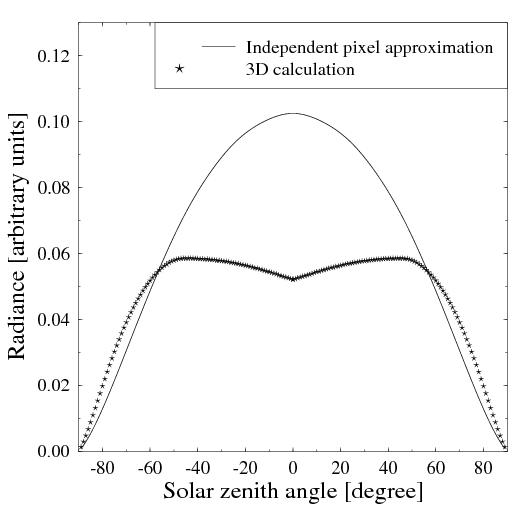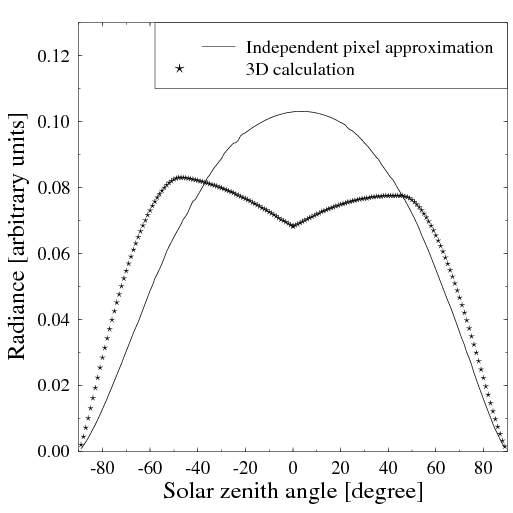Nadir viewing direction
In the Nadir viewing direction, the domain-averaged radiance is
symmetric about noon (solar zenith angle: 0 degree). The stars
show the exact MYSTIC results while the solid line is the
independent pixel approximation. There are two notable features:
First, the exact radiation is considerably smaller than the
independent pixel approximation for overhead sun. This is due to
the fact that in the 3D simulation many photons "drop" out of the
cube sides and don't contribute to the signal which is not
considered by the independent pixel approximation. Second, the
maximum radiance does not occur for overhead sun but for about 45
degree. At this angle, all incoming solar radiation is intercepted
by the cloud, either by the top or the side of the cube (which
again is not the case in the independent pixel approximation).
At about 60 degrees the independent pixel approximation and the 3D
calcultion coincide. At this angle the loss of radiation through
the cube sides is obviously compensated by the gain due to
interception of direct solar radiation at the cloud sides.
View an animation of the radiance distribution, as the sun
wanders from the left (SZA -90 degree) through the zenith (SZA 0
degree) to the right (SZA 90 degree) of the szene
|

|



